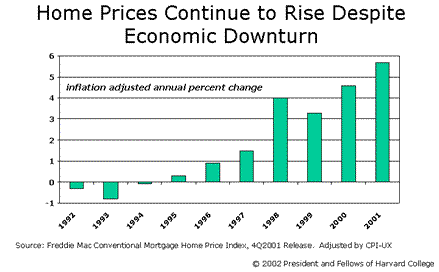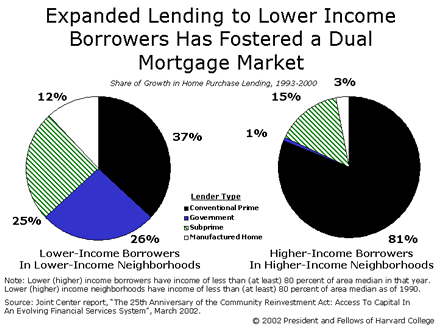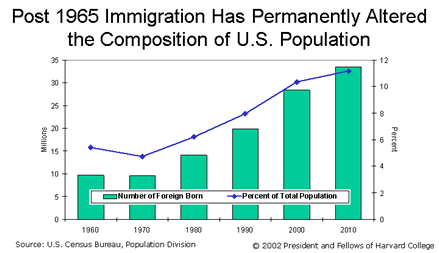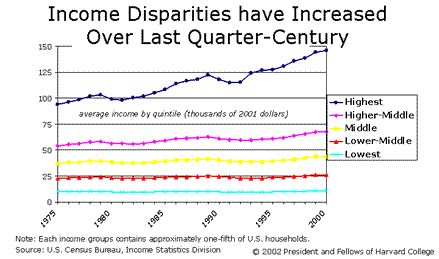
During Past Recession
2002 Harvard study shows maintaining homeownership gains
key to strong economy

by Kermit Baker, PhD, Hon. AIA
AIA Chief Economist
As the economy emerges from its first recession in nearly a decade, the housing sector continues to display remarkable resilience. Even after the events of September 11 threatened to deepen the downturn, rock-solid home prices and historically low mortgage interest rates helped consumers keep faith in housing as an investment. As a result, not only home sales and production but also home-improvement spending climbed to new record-setting levels by year-end.
Continuing a seven-year surge, inflation-adjusted home prices in 2001 were up fully 5.3 percent from 2000. With this rapid price appreciation, the nation's 70 million homeowners continued to accumulate home equity at astounding rates. For example, buyers who purchased a typical $125,000 home in 1995 saw a $27,000 increase in real equity at the end of last year. Even those who bought as recently as 1998 had amassed $19,000 by year's end. For owners who made down payments of 10 percent, these represent stunning real gains of 215 percent and 142 percent.

Many households drew out cash from their accumulating equity, either at the time of sale or when refinancing their mortgages, to fund consumer purchases. Indeed, recent Federal Reserve Board analyses suggest that growth of household wealth drives a fifth of all consumer spending in a typical year. Gains realized from the sale of 5.2 million homes enabled home sellers to purchase bigger and better homes and/or convert accumulated equity into spendable cash. In addition more than 2 million homeowners refinanced last year, with more than half taking out cash in the process. Although households that trade up to bigger homes or cash out equity accumulate additional debt, overall home values rose enough last year to offset this increase.
Consolidating homeownership
gains
Despite the upward trend in prices, in recent years millions of lower-income
households have made the transition to homeownership. Spurred by the strong
economy, favorable mortgage interest rates, and innovations in mortgage
finance, the share of home-purchase loans going to lower-income households
and/or households living in lower-income communities rose from 31 percent
in 1993 to 36 percent in 2000.
This growth has, however, been fueled by emergence of a dual mortgage-delivery system in which new types of lending organizations offer distinctly different mortgage products to lower-income markets than the products commonly available in higher-income markets. This distinction is most apparent in lower-income neighborhoods, where government-backed loans and lending by subprime and manufactured housing specialists account for almost two-thirds of recent growth (See chart below.) In fact, conventional prime lending—that is, mortgages with the lowest rates and most favorable terms—accounted for just 37 percent of the growth in lower-income lending, compared with 81 percent among higher-income borrowers in higher-income neighborhoods.

Innovative financing alternatives have undoubtedly enabled many families to become homeowners who would otherwise fail to qualify for loans because of limited income and wealth or problematic credit histories. At the same time, defaults are far more common on these higher-cost loans, suggesting that some lower-income households may remain homeowners only temporarily. A prolonged economic downturn could have devastating impact on those households with limited ability to meet current mortgage payments and equally limited equity or cash reserves needed to ride out the storm.
High debt burdens and vulnerability to default among lower-income owners raise concerns for the entire housing market. A major upsurge in foreclosures would not only impose hardship on individual families, but could also destabilize selected communities, dampen home price inflation, and send homebuyers—and consumers in general—into hiding. This risk underscores the importance of ensuring that lower-income households have access to financing on the best terms for which they qualify, rooting out predatory lending practices, and assisting borrowers trapped in high-cost mortgages.
Longer-term prospects
As the emerging recovery takes hold, the pressure on housing markets from
defaults and foreclosures should ease. Even so, the torrid pace of home
price appreciation is unlikely to continue. Home prices nationwide have
outdistanced homeowner income growth for the past several years, particularly
in red-hot markets such as San Francisco and Boston. So far, though, low
mortgage interest rates have masked the adverse effects of this inflation
on first-time buyers. Even a moderate rise in rates will therefore expose
major affordability problems in some markets.
While the housing market may therefore cool in the near term, favorable demographics should prevent a thorough chill. Indeed, Joint Center for Housing Studies of Harvard University projections suggest that the number of homeowners will increase by an average of 1.1 million annually over the next two decades, notably faster than the roughly 1.0 million annual rate averaged since 1990.
Much of this growth reflects the dramatic increase in the foreign-born population since the 1970s. Following a century-long decline, the influx began to pick up pace with a sharp rise in Latin American and Asian immigration. Today, almost 1 in 10 U.S. residents is foreign-born.

Immigrants and their children are already driving demographic change in the nation as a whole as well as in many of the nation's largest metropolitan areas. Of the 10 million immigrants who entered the U.S. during the 1990s, about half are from Mexico, the Caribbean, and elsewhere in Latin America, and one-quarter are from Asia. Fueled by this rapid increase, the number of minority households is expected to grow by 15.3 million over the next two decades, accounting for an astounding 64 percent of total household growth.
Many of these new households will become homeowners. Between 1996 and 2001, minority homeownership gains—bolstered by the growing immigrant population—began to surge just when the baby bust would otherwise have dampened home buying. As a result, minorities contributed nearly 40 percent of net new owners during this period and are projected to account for 50 percent of the growth over the next two decades.
Despite this increase in share, minority ownership rates will likely continue to lag behind those of whites by a substantial margin, a reflection of continued lag in minority income growth, the limited ability of many new immigrants to quickly make the transition to homeownership, and the continued lack of favorable financing options in some marketplaces. As a result, while participating in the general upward drift in homeownership, minorities will come to dominate renter markets. Indeed, over the next 20 years, the number of white renters is most likely to decline by 3.4 million and the number of minority renters looks to grow by 5 million. As a result, minorities will account for fully half of all renters by 2020.
Housing and poverty
Even after a decade of record economic growth, 20 percent of the nation's
households had annual incomes less than $16,000. With a 2000 median of
$10,700, the income of this lowest 20 percent has changed little since
1975, rising slightly during periods of economic growth and falling back
again during periods of economic downturn. In contrast, income for households
in the top 20 percent of the distribution moved up over the period 1975
to 2000 an inflation-adjusted 55 percent to $145,600—increasing by
over 25 percent since 1991 alone.

The strong economy of the 1990s enabled incomes at the low end of the distribution to rise, yet the weakening economy prompted concerns that even these modest income gains would once again be lost. While detailed data on household incomes for 2001 are not yet available, it seems likely that household income growth slowed—particularly at the low end of the spectrum—as rising unemployment pushed downward on the earnings of lower-skilled workers.
Continued upward drift in home prices and rents represent a serious challenge for the more than 19 million households with income less than $16,000. Although much attention is focused on the housing problems of lower-income renters, the vast majority of lower-income owners still face severe housing problems. Indeed, over 7 million renter families and 8 million owner families in the lowest income group pay more than 30 percent of their limited incomes for housing and/or live in structurally inadequate or overcrowded homes. Just as it is important to help lower-income renters in their plight, housing policy must address the needs of lower-income owners if they are to hold onto their most important financial asset, their homes.
The spatial isolation of the nation's poorest households adds to the difficulty. Although some lower-income families live in small towns and outlying rural areas, many reside in aging and economically distressed central city neighborhoods. Because most upwardly mobile households—including immigrants and minorities—are unwilling to live in such areas, they leave when they have the resources to do so. This only perpetuates the concentration of disadvantaged households in distressed areas.
As jobs and housing continue to shift to suburban and outlying areas, those left behind in deteriorating central cities increasingly lack the social and economic opportunities—access to good-quality housing, schools, and employment—essential to family stability and the accumulation of wealth. Programs to expand the supply of affordable rental and owner housing—in city, suburban, and rural areas alike—are vital not only to an effective national housing policy, but also to closing the persistent income and wealth gaps that separate the haves and the have-nots.
Copyright 2002 The American Institute of Architects. All rights reserved.
![]()
|
Note: This article is a summary of the "State of the Nation's Housing—2002," recently released by the Joint Center for Housing Studies of Harvard University. Copies of the full report are available free of charge on the Joint Center's Web site, or a printed copy can be purchased for $15 prepaid by calling 617-495-7908. |
|